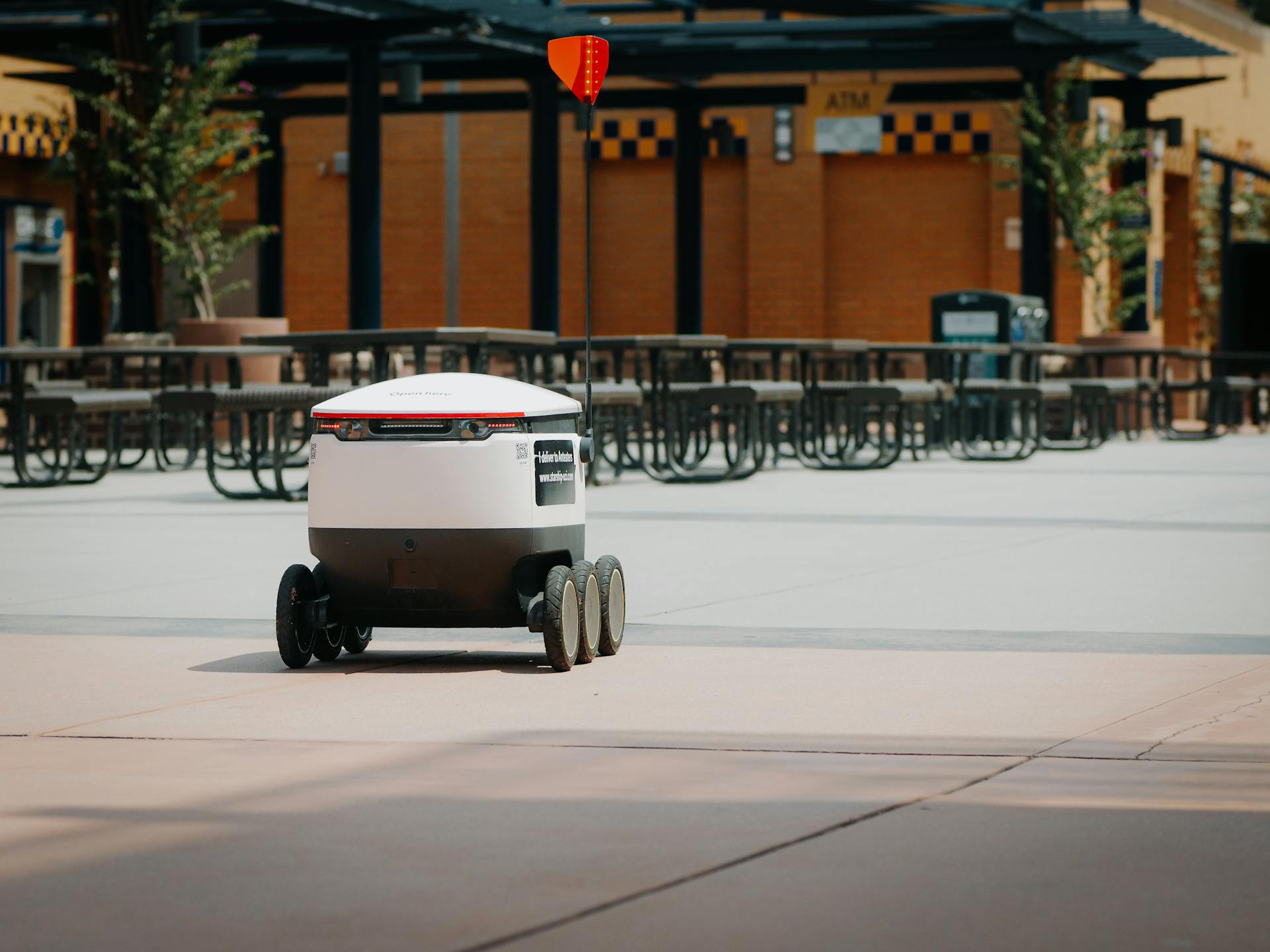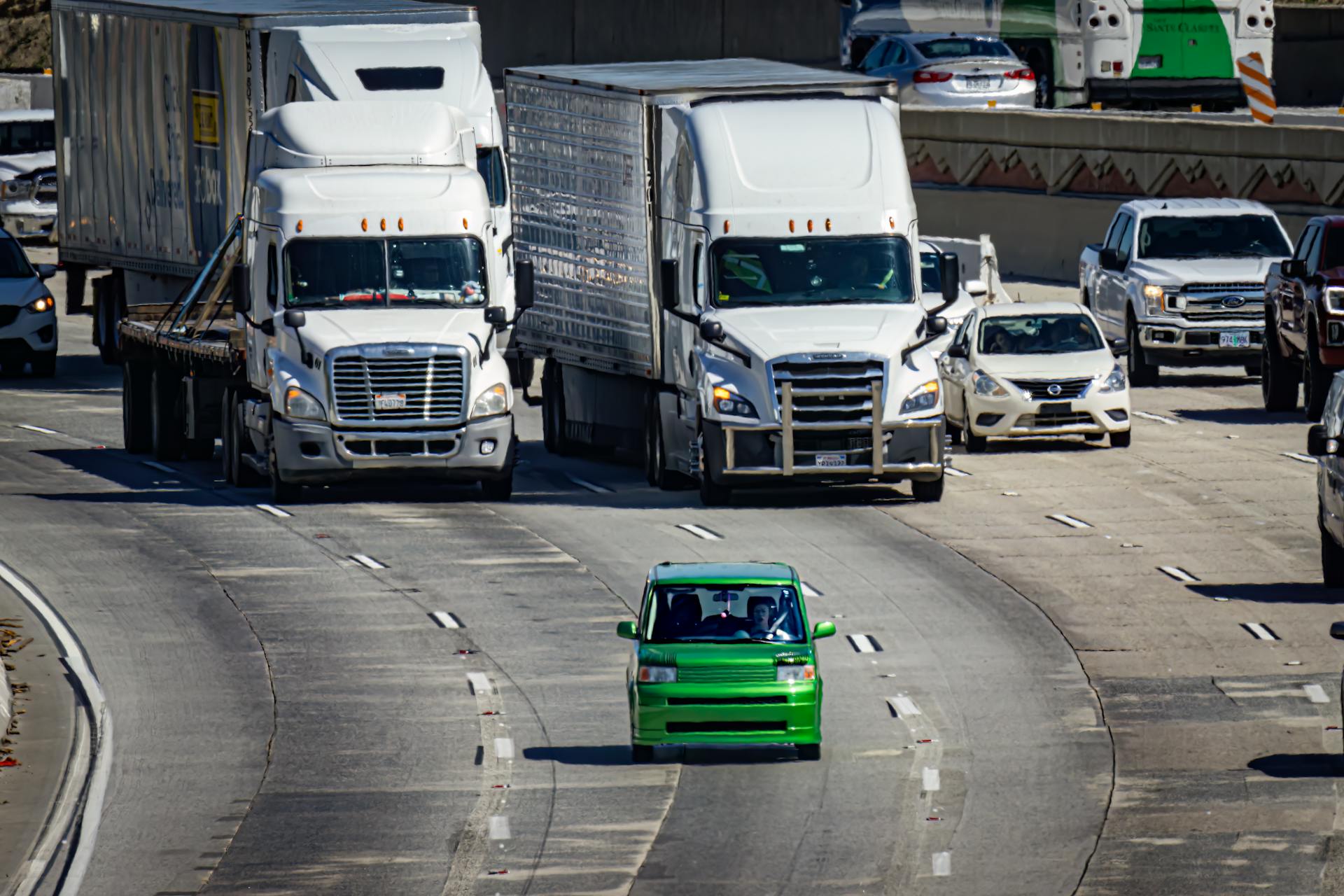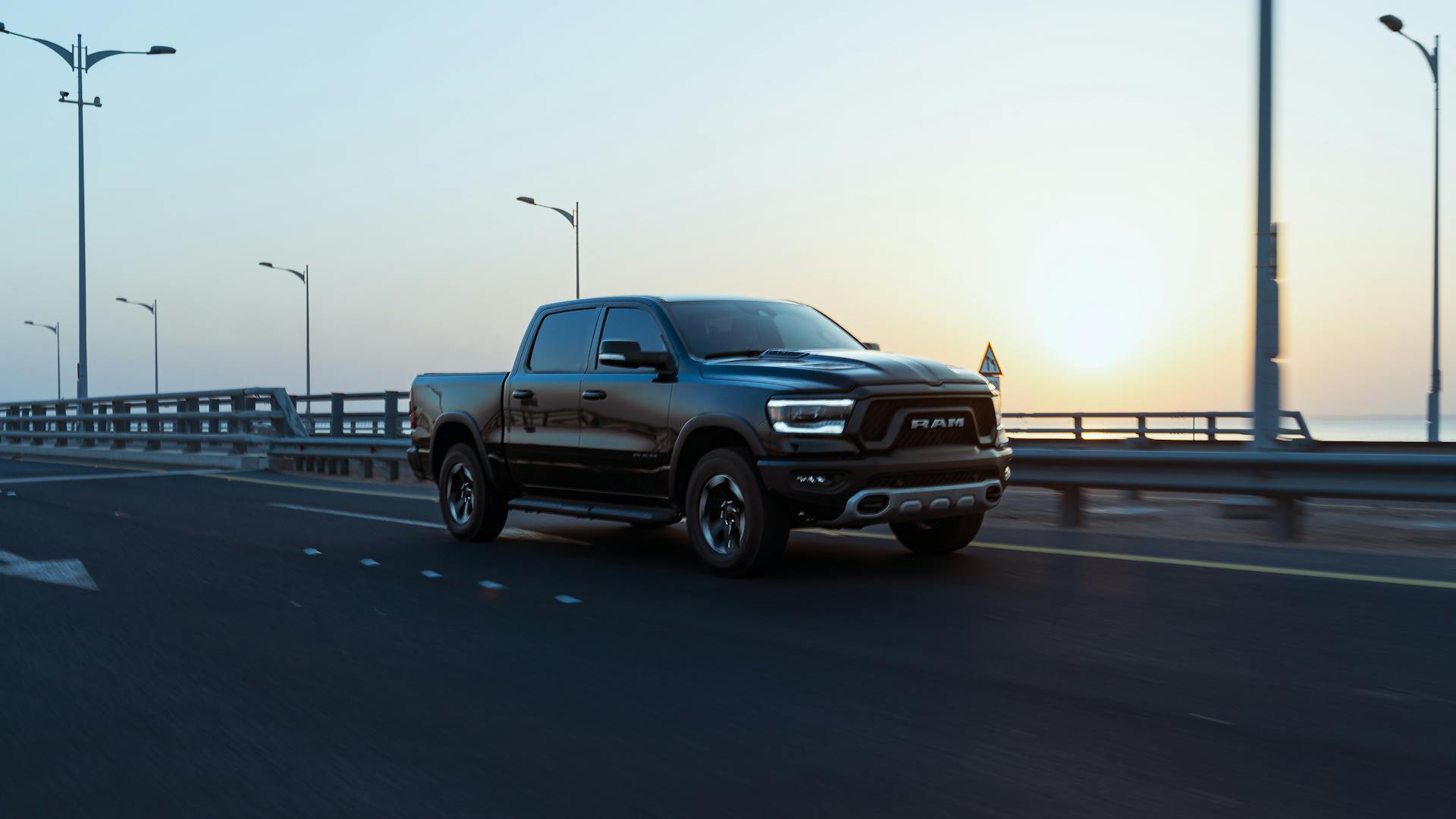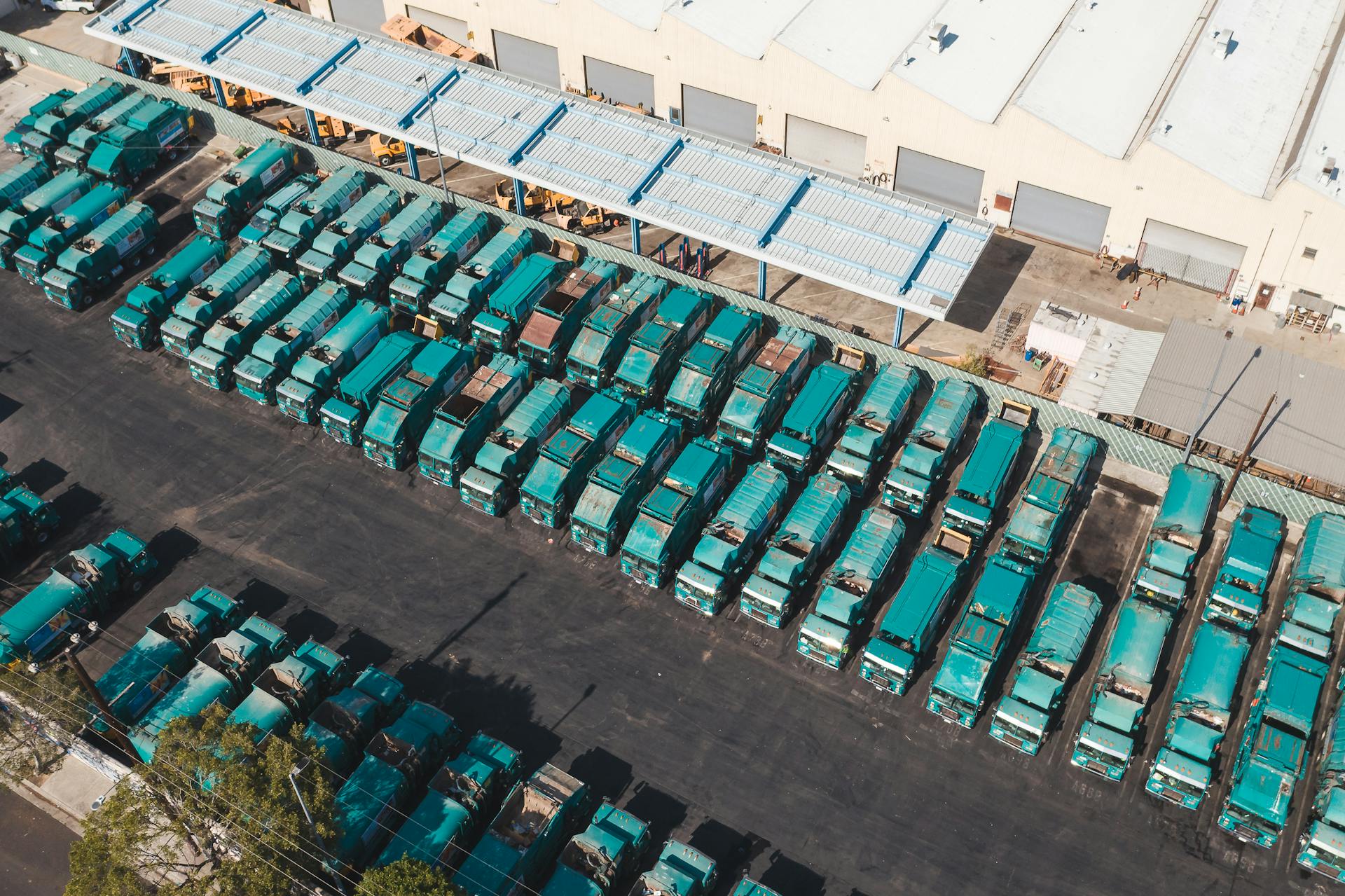
Self-driving semi trucks are revolutionizing the freight industry in a big way. They have the potential to reduce accidents by up to 90% by minimizing human error.
These trucks can drive for hours without getting tired, increasing productivity and reducing labor costs. They can also optimize routes in real-time, reducing fuel consumption and lowering emissions.
One of the most significant benefits of self-driving semi trucks is their ability to operate 24/7, without the need for rest breaks or meal times. This means that goods can be transported more efficiently, getting to their destination faster.
Self-driving semi trucks can also improve safety by reducing the risk of accidents caused by distracted or fatigued drivers.
Benefits
Self-driving semi trucks are not only a game-changer for the transportation industry, but they also bring numerous benefits to the table.
The autonomous trucking industry could hold the potential to unlock numerous safety and efficiency benefits for the freight transportation industry.
Reducing labor costs is a significant advantage of autonomous trucking companies, which could help ease the trucking industry's longstanding struggle to attract and retain professional drivers.
By automating some longhaul truck routes, autonomous trucking companies could shift some driver jobs from longhaul truckload operations to shorthaul and regional jobs that provide more home time and better match the preferences of many younger drivers.
Autonomous trucks will operate more efficiently than human-driven trucks, which could lead to significant fuel savings.
Traveling at lower average speeds, autonomous trucks will consume less fuel, making them a more environmentally friendly option.
Safety
Autonomous vehicles can perceive hazards sooner and react faster than humans, making them a safer option on the roads.
Computers don't get tired or become distracted or angry behind the wheel, which is a major advantage over human drivers.
Redundant systems are a crucial aspect of ensuring safety in autonomous driving trucks. These systems include secondary braking and steering systems, redundant powertrain controls, and cybersecurity safeguards.
These redundant systems will be especially important in the event of a technical failure, when the primary systems may not be functioning properly.
Redundant Systems for Safety
Autonomous driving trucks will require additional components and redundant systems to ensure safety in the event of a technical failure.
These systems include secondary braking and steering systems, which can take over in case the primary systems fail.
Redundant powertrain controls are also necessary to prevent accidents.
Cybersecurity safeguards are another crucial aspect of redundant systems, as they protect against potential hacking threats.
In the event of a technical failure, these systems can help prevent accidents and ensure the safety of people on the road.
Autonomous truck platforms developed by truck makers and technology suppliers feature these redundant systems, providing an extra layer of safety.
Union Rep: No Replacement for Human Operator on the Road
Automation in the trucking industry is a topic of debate, but some union representatives are clear: there's no replacing a human operator on the open road.
According to Bill Carroll, president of Teamsters Joint Council 39, a human operator is essential, especially in emergency situations.

"If something catastrophic happens, and there's nobody around to actually see what happened — it's much better having somebody behind that wheel", Carroll said.
This is crucial because a human operator can respond to unexpected events in a way that automated systems can't.
Carroll and other union representatives are skeptical of the idea that automation is inevitable, pointing out that it's not always the best solution.
As Matt McQuaid, a communications representative for the International Brotherhood of Teamsters, said, "This idea that it's inevitable, it's coming, that isn't what we've seen in practice."
Autonomy
Autonomous trucks are being developed to enhance and expand the capabilities of driver-assist technologies.
The Aurora Driver is a key player in this space, integrating with transportation management systems to schedule loads seamlessly.
The early results of the pilot program with Aurora are impressive, particularly its ability to autonomously haul freight between Fort Worth and El Paso.
SAE International has designated levels of vehicle automation to clearly define the capabilities of various driver-assist and automated driving systems.
Here are the levels of vehicle automation:
Fully autonomous semi-trucks are not restricted by hours-of-service requirements and only need to stop for fueling, loading, and maintenance.
Technology
Self-driving semi trucks rely on advanced technology to ensure safety and reliability. Autonomous driving software and sensors are crucial components of this technology.
To integrate these components into commercial vehicles, developers must install them at the factory level. This approach ensures that the technology is properly integrated and tested.
Driver-assist technologies, such as automatic emergency braking and adaptive cruise control, are being introduced by truck manufacturers and suppliers. These features can be viewed as building blocks for fully autonomous vehicles.
A key aspect of self-driving semi trucks is the ability to partially automate steering functions. Lane keep assist and lane departure protection are examples of automated steering capabilities.
The Aurora Driver technology includes self-driving hardware, software, mapping, and data services. This comprehensive approach is necessary for developing fully autonomous vehicles.
Business and Deployment

The Aurora Driver will integrate with a customer's transportation management system to seamlessly schedule loads. This integration will enable businesses to streamline their logistics operations and reduce costs.
Aurora is working with companies like Uber Freight to develop and deploy autonomous trucking technology. For example, Werner Enterprises is collaborating with Aurora on a pilot program that has shown promising results, particularly on the route between Fort Worth and El Paso.
The early results of the pilot program are impressive, with autonomous trucks able to haul freight safely and efficiently. This technology has the potential to bring significant benefits to the trucking industry, including improved safety, reduced labor costs, and increased productivity.
Introduction to Trucking
Autonomous trucking is becoming a reality on public roads, with several technology developers using self-driving trucks to haul freight through partnerships with shippers, carriers, and logistics providers.
These early deployments still have safety drivers behind the wheel and an operations specialist in the passenger seat, but the goal is to enable unmanned operation in the coming years.
Autonomous trucking companies are equipping commercial trucks with onboard computing to support automated driving software, along with sensor arrays that incorporate cameras, radar, and lidar to monitor the vehicle's surroundings.
Most autonomous truck developers are targeting unmanned operation, but they're also pursuing business models that complement the trucking industry's workforce rather than displacing it.
These companies aim to unlock significant efficiency and productivity gains while improving highway safety, making autonomous trucking a viable option for real-world freight operations.
Deploying at Scale
Deploying at scale is a complex task, but it's clear that the industry is making progress. Several technology developers have already been using autonomous driving trucks to haul freight on public roads through partnerships with shippers, carriers, and logistics providers.
The goal for most of these developers is to enable unmanned operation in the coming years. To pave the way for this vision, autonomous trucking companies are equipping commercial trucks with onboard computing to support automated driving software along with sensor arrays that incorporate cameras, radar, and lidar to monitor the vehicle's surroundings as it travels down the highway.

Industry stakeholders from truck manufacturers to industry suppliers and technology developers increasingly see the rollout of autonomous trucks not as a question of if, but of when. The precise timing for meaningful commercial deployment of autonomous trucks at scale remains elusive.
However, the transition to a 5G wireless network is likely to open up new opportunities in terms of autonomous trucking technology. This could potentially accelerate the deployment of autonomous trucks at scale.
Here are some potential benefits of deploying autonomous trucks at scale:
- Increased Efficiency and Productivity: Fully autonomous trucks would no longer be constrained by drivers' limited driving time under hours-of-service regulations, thus opening the way for much greater vehicle utilization and higher productivity.
- Reduced Labor Costs: Autonomous trucking companies could help ease the trucking industry's longstanding struggle to attract and retain professional drivers.
- Strategic expansion: Aurora Driver-powered trucks are on the road in Texas, bringing autonomy (with the support of vehicle operators) along some of the busiest freight corridors in the country.
Challenges and Concerns
The rollout of autonomous trucks is a topic of much discussion, but one thing is clear: industry stakeholders are increasingly confident that it's not a matter of if, but when. The timing of large-scale deployment remains unclear.
One of the biggest concerns surrounding autonomous trucks is the uncertainty surrounding their deployment. Industry stakeholders from truck manufacturers to technology developers are waiting for the right moment to roll out these vehicles on a large scale.
The industry is moving forward with caution, and it's likely that autonomous trucks will become a reality in the not-so-distant future.
Who's Who in Space

Autonomous truck development is being led by companies like TuSimple, which has announced plans to conduct driverless freight runs between Tuscon and Phoenix in Arizona. These companies are making tangible progress toward deployment and commercialization.
Self-driving truck developers are not trying to create unmanned vehicles that can go everywhere, but rather are focusing on reducing the complexity of the problem by limiting the operational design domain. This means autonomous trucks will only operate on specific, repeatable routes that are well suited to automation.
The trucking industry will still need professional truck drivers for the foreseeable future, as autonomous trucks will only travel on certain routes and under specific conditions. However, autonomous driving trucks could help ease the industry's struggles to recruit drivers and mitigate high driver turnover rates.
Autonomous truck companies are currently operating primarily in the U.S. Sunbelt, especially in Southwestern states like Texas, Arizona, and New Mexico, due to ideal weather conditions and a favorable regulatory environment. Some companies have even mapped out nationwide networks for autonomous truck lanes as part of their longer-term ambitions.
Timing of Large-Scale Deployment Unclear

The timing of large-scale deployment of autonomous trucks remains unclear, with industry stakeholders increasingly seeing it as a matter of when, not if.
Industry stakeholders from truck manufacturers to industry suppliers and technology developers are on the same page, with many expecting the rollout of autonomous trucks to happen soon.
The precise timing for meaningful commercial deployment of autonomous trucks at scale remains elusive, making it difficult to predict when we'll see widespread adoption.
In the trucking industry, the prospect of highly automated vehicles became a more prominent topic in 2014 and 2015 with the introduction of the Mercedes-Benz Future Truck 2025 and Freightliner Inspiration concept trucks.
The development and rollout of driverless passenger cars, such as those operated by Waymo and Cruise, took many years, with Waymo beginning as the Google self-driving car project in 2009 and not offering its fully autonomous ride-hailing service to the public until 2020.
Autonomous trucking technology is developing in parallel with the deployment of autonomous passenger cars, which may indicate that we're on a similar timeline for large-scale deployment.
Industry Partnerships

Developers of autonomous driving systems are forming partnerships with global truck manufacturers to make unmanned trucks a reality.
These partnerships involve companies working together to overcome the technical challenges of autonomous driving.
Industry suppliers are also being brought on board to provide the necessary components and technology for autonomous trucks.
By partnering with a range of stakeholders, developers can tap into a wealth of expertise and resources to accelerate the development of self-driving semi trucks.
This collaborative approach is helping to drive innovation and progress in the field of autonomous driving.
Frequently Asked Questions
How much does a self-driving 18 wheeler cost?
The cost of a self-driving 18 wheeler varies by region, with a reference purchase cost of around $112,000 in China and $214,286 in the US. This significant price difference highlights the need to consider factors beyond initial cost when evaluating autonomous truck technology.
Are self-driving trucks legal?
Self-driving trucks are currently banned in California for vehicles over 10,000 pounds until regulations are established. However, they have been tested in other states and internationally.
How soon will autonomous trucks be available?
Autonomous trucks, including truck platoons, are expected to appear on highways by 2027. This marks a significant milestone in the development of self-driving vehicles.
Sources
- https://www.amundsendavislaw.com/alert-autonomous-semi-trucks-are-shaping-the-industry-for-the-long-haul
- https://aurora.tech/freight
- https://www.cbsnews.com/news/self-driving-tractor-trailers-us-roads-aurora/
- https://www.wpr.org/news/remote-drivers-self-driving-semitrucks
- https://www.ttnews.com/articles/autonomous-trucks-reshaping-freight-industry
Featured Images: pexels.com


